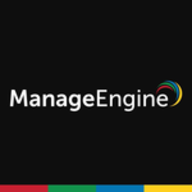

Microsoft Configuration Manager and ManageEngine Patch Manager Plus are contenders in systems management and patching solutions. Microsoft Configuration Manager is favored for its robust feature set and extensive integration within Microsoft environments, while ManageEngine Patch Manager Plus is noted for its simplicity and cost-effectiveness, particularly appealing for those focused on straightforward patch management.
Features: Microsoft Configuration Manager provides application deployment, compliance reporting, and extensive software patching. It efficiently manages mobile devices and conducts comprehensive hardware/software inventory tracking. ManageEngine Patch Manager Plus offers cross-platform patch management, handles non-Microsoft products efficiently, and delivers a user-friendly experience.
Room for Improvement: Microsoft Configuration Manager could enhance its CPU/memory efficiency and simplify application package deployment. Compliance reporting accuracy could also be improved. ManageEngine Patch Manager Plus would benefit from UI enhancements, better integration for multi-vendor environments, and strengthened reporting capabilities.
Ease of Deployment and Customer Service: Microsoft Configuration Manager often requires complex on-premises setup, with customer service occasionally hindered by tier-level delays. ManageEngine Patch Manager Plus offers easier deployment, including cloud options, and is praised for personalized support services.
Pricing and ROI: Microsoft Configuration Manager is more expensive, reflecting its comprehensive features and Microsoft network integration, providing good ROI despite high costs. ManageEngine Patch Manager Plus is cost-effective, particularly favorable for budget-conscious entities focusing primarily on patch management.
Compared to other products, ManageEngine provides good return on investment within five years.
Customer service and support are excellent, with a perfect score of ten out of ten.
The technical support from ManageEngine Patch Manager Plus is helpful.
Their response time and first-level support quality need improvement.
For technical support from Microsoft, I would rate them a nine.
Scalability requires downtime for performance adjustments.
The product is suitable for our size, handling 800 devices.
The solution is very stable.
There were misconfigurations by our team rather than issues with the product itself.
When the patch testing works well, there is no need for patch management rollbacks.
Instead of separate technician licenses for each product, there should be a single bundled license to simplify licensing requirements.
A better command line interface for Microsoft Configuration Manager would be an additional feature I would to see in the future to make it closer to a perfect score.
Improvements are needed for servers. Servers are still not getting it properly, so we could add the servers in Microsoft Configuration Manager for things such as OS deployment and Autopilot as well.
There is a concern regarding the exchange rate as one dollar equals six reais today, making everything expensive in dollars for us.
ManageEngine's licensing model recently changed from being endpoint-based to server-based, which might affect costs during the next renewal.
The setup cost is considered sufficient.
The pricing for Microsoft Configuration Manager is okay for me.
The software covers platform security and application security, ensuring everything is updated at the endpoint level.
The vulnerability scanning highlights outdated PCs and users breaching policies.
It is valued for its role in addressing the vulnerabilities discovered by Insight VM.
If I want to get a fetch report for anything, such as hardware-related issues or group policy-related issues, I need to fetch the report by using SCCM's scripting language and remediation part.
The most valuable features I find in Microsoft Configuration Manager are mostly patching, deploying software, deploying images, and running custom scripts.
The product valuable for deployment recovery.
| Product | Market Share (%) |
|---|---|
| Microsoft Configuration Manager | 11.0% |
| ManageEngine Patch Manager Plus | 6.0% |
| Other | 83.0% |


| Company Size | Count |
|---|---|
| Small Business | 10 |
| Midsize Enterprise | 4 |
| Large Enterprise | 3 |
| Company Size | Count |
|---|---|
| Small Business | 20 |
| Midsize Enterprise | 13 |
| Large Enterprise | 64 |
Patch Manager Plus is a simple patch management tool that makes it easy to keep your network patched and secure. It is an endpoint patch management software that provides enterprises a single interface for automating all patch management tasks - from detecting missing patches to deploying patches - for Windows, Mac, Linux and 250+ third-party applications. Whether you have one computer or hundred, they can all be patched at the same time from a single point of console.
Microsoft Configuration Manager streamlines IT management with features such as software deployment, patch management, and automation, centralizing operations for Windows environments. Integration with Microsoft products allows efficient oversight of workstations and servers.
Microsoft Configuration Manager provides comprehensive IT management, offering software deployment, patch management, and application pushing. Automation reduces manual tasks, ensuring consistency across systems. Centralized management enables standardized OS deployments, application updates, and configuration integrity. Integration with Microsoft products facilitates seamless operations, while hardware and software inventory, compliance reporting, and remote control functions enhance IT management. Users seek improvements in application deployment for those without deep scripting knowledge and desire better WSUS control, PowerShell and Intune integration, Linux compatibility, and user interface enhancements. Performance improvements are requested for remote user management and third-party application support.
What features enhance Microsoft Configuration Manager?Microsoft Configuration Manager is widely implemented in organizations to manage Windows workstations and servers. It is essential for deploying operating systems and applications, managing software updates, and conducting hardware and software inventories. The tool is crucial for endpoint and configuration management, ensuring compliance, and automating processes like patching and vulnerability management. Industries such as finance, healthcare, and education rely on Microsoft Configuration Manager to keep systems secure and operational, adapting it to address their specific needs and challenges in maintaining diversified IT environments.
We monitor all Patch Management reviews to prevent fraudulent reviews and keep review quality high. We do not post reviews by company employees or direct competitors. We validate each review for authenticity via cross-reference with LinkedIn, and personal follow-up with the reviewer when necessary.